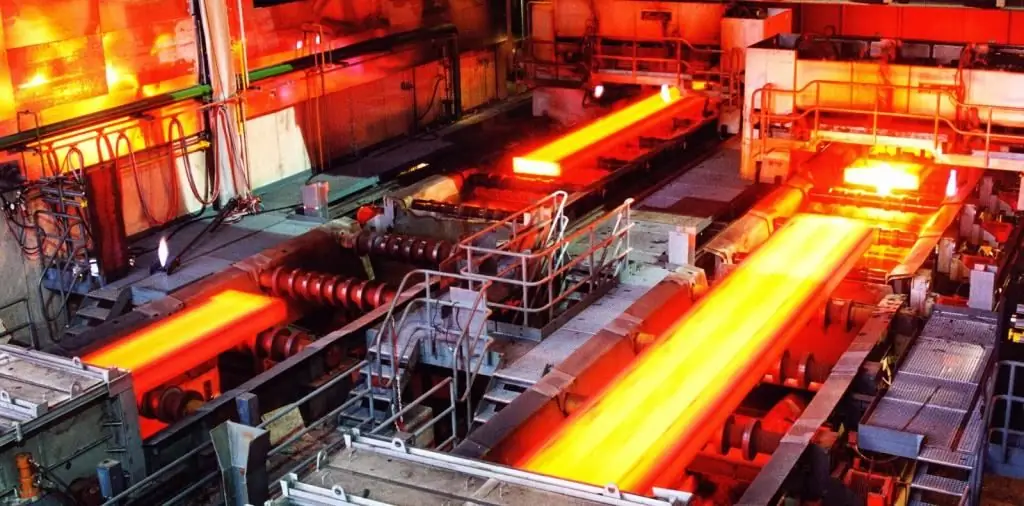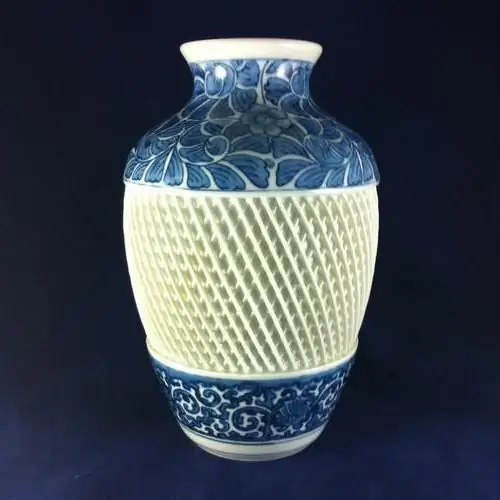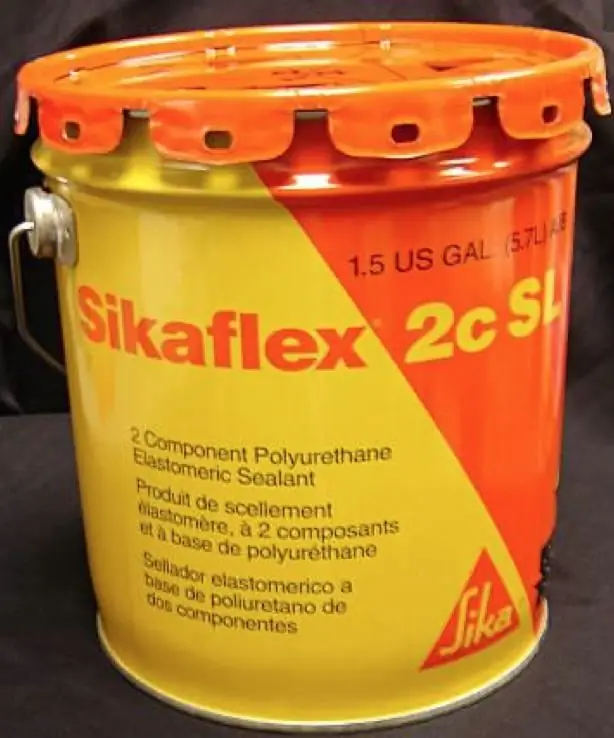2025 Author: Howard Calhoun | [email protected]. Last modified: 2025-01-24 13:10:37
Porcelain stoneware is the most aesthetically attractive and practical finishing material today. Initially, it was used for technical purposes, such as industrial plants and public places. But modern technology has made it possible to create new types of products that combine the outstanding properties and characteristics of porcelain stoneware with different design options and an extensive palette of shades and textures.
Slip, which is a porridge-like soft porcelain mass, acts as the basis for creating porcelain stoneware slabs. Raw materials include:
- illite clays;
- kaolin;
- quartz;
- feldspar.
If you want to use porcelain stoneware for finishing the premises of your house or apartment, you should understand in more detail the characteristics and properties of this material, which will be discussed below.
Material weight

Weight 1 m2porcelain stoneware will depend on the thickness of the tiles. This characteristic is one of the important ones to consider when buying and choosing finishes. If you pay attention to European standards, you can understand that the specific gravity of porcelain stoneware is 2,400 kg/m3, which is approximately equal to the specific gravity of glass. Porcelain stoneware has water absorption ranging from 0.01 to 0.05%. This indicates that the porosity of the material tends to zero, so it is heavier than conventional ceramic tiles.
The weight of 1 m2 of porcelain stoneware can be determined based on some parameters. For example, with a product thickness of 9 mm, a square meter will weigh approximately 19.5 kg. If we take a square-shaped tile with a side of 300 mm and a thickness of 12 mm, then the weight will be 28 kg/m2. The weight of 1 m2 of porcelain stoneware will be less if the thickness is reduced to 10 mm. For a tile of this format, one square meter will weigh about 24 kg.
From this we can conclude that the weight of a square meter directly depends on the thickness and size of the tiles. The main parameter will also affect the choice of glue. If the elements are heavy enough, you should choose such an adhesive composition so that the tiles do not slip from the surface during facing work.
Basic Features

When choosing a building material, you should familiarize yourself with its basic properties. Only in this way will you be able to purchase a sample whose characteristics will correspond to the operating conditions. When finishing the floor, for example, wear resistance is one of the important indicators. Fromthis determines the resistance of the material to dynamic impact and abrasion.
Porcelain stoneware has frost resistance, so it can be used outdoors. In practice, it is able to withstand more than 100 freeze and thaw cycles. The material does not absorb moisture, so even at sub-zero temperatures it will not crack.
It can interact with any chemicals without causing a reaction. When you know the weight of 1 m2 of porcelain stoneware, you should also pay attention to such an important indicator as bending strength. This parameter is almost three times higher than the same characteristic of natural stone. If we compare with floor tiles, then here the difference in the direction of porcelain stoneware will be 1.5 times greater. This is due to the high density of the material, which is 1,400 kg/m3.
Now you know how much porcelain tile weighs (weight 1 m2). You may be interested in other characteristics. It may be the size of the products. The most common is a square with sides of 600 x 600 mm, while the thickness varies from 7 to 14 mm. The resistance of the material to slip will depend on the surface roughness. If you use porcelain stoneware outdoors, then you should choose a material with a pronounced relief, which will reduce the risk of injury. Porcelain stoneware has another important advantage, which is expressed in the ability to retain heat, so it can be used in the arrangement of heating systems and ventilated facades.
Features

Among the main characteristics of porcelain stoneware should be highlighted:
- abrasion;
- moisture absorption;
- color fastness;
- wear resistant;
- roughness.
In terms of moisture absorption and frost resistance, porcelain stoneware can be considered the best material with high moisture resistance in these two characteristics. The material complies with the EN standard. According to him, the plate has a stability of 3%.
We found out how much porcelain stoneware for the floor weighs (weight 1 m2). You can also get acquainted with other characteristics, for example, resistance to frost. This indicator is one of the main ones. It determines the possibility of operation not only indoors, but also on the street. Technical properties are measured in 50 temperature cycles, which equals the same number of years.
Bending strength and abrasion

According to the aforementioned standard, porcelain tile meets two parameters: scratch resistance and fracture resistance. The first characteristic is 6 Mohs, while the fracture resistance is equal to or greater than 27 N/m2. As for abrasion, porcelain stoneware can correspond to one of the five known classes.
Wear and color fastness
The first parameter provides three criteria that determine the durability of the material, among them should be highlighted:
- deep abrasion;
- surface abrasion;
- general stamina.
According to the above standard, the technical properties define this value as EN 205. The weight of 1 m2 of porcelain stoneware with 10mm tile thickness has been mentioned above. However, before buying a material, you should also familiarize yourself with the color fastness. The described building sample is different in that the surface does not interact with chemical elements and is not exposed to ultraviolet radiation. The rougher and more complex the texture, the more the surface is exposed to contamination.
Glue finishing weight

The weight of 1 m2 of porcelain stoneware with adhesive will be calculated taking into account the weight of one square meter of cladding and the mass of adhesive applied to the same area. The final value will also depend on the size of the spatula teeth. If this value is 6 mm, then it will take approximately 2.7 kg of glue per square meter.
In order to find out how much the finish will weigh with glue, you need to add 2.7 kg to the above value for the mass of the building material, which will give you 22.2 kg. This value is the minimum and is valid for a 9mm thick tile.
In closing

In order to determine the load of finishing on the ceiling, you need to know the weight of 1 m2 of porcelain stoneware (600 x 600 - these are the dimensions of the tile). For such parameters, the mass of one square meter will be approximately 23 kg. However, this characteristic is not one of the most important. It is also necessary to pay attention to the properties that indicate the areamaterial use. For example, some types of porcelain stoneware are designed for exterior cladding, others for interior cladding. One tile is used to finish the walls, while the other, rough, is used to finish the floor.
Recommended:
Steel 09G2S - properties and characteristics

Diversity in the steel industry is often intimidating for people who need to purchase a particular grade of steel for a specific need. This problem is solved by a long and methodical study of the topic, understanding its very essence. However, there is a way to cut a little. This article contains all the most important and useful information regarding steel 09G2S. Reading this article will not take much time, and the knowledge gained will help you choose the right material
High molecular weight polyethylene: description, properties, applications

Every day, new materials obtained by artificial means are introduced into the sphere of human activity. One of these is high molecular weight polyethylene, which has become a commercial product since the 50s of the last century, but it is gaining real popularity only now
Properties of porcelain and its application

The term "porcelain" refers to a wide range of ceramic products that are made at high temperatures. Their distinguishing features are a smooth surface and low porosity
Two-component polyurethane sealant: definition, creation, types and types, characteristics, properties and nuances of application

With long-term and high-quality sealing of seams and cracks, polyurethane two-component sealants have found their wide distribution. They have high deformation and elastic properties, therefore, they can be used as butt sealants in the field of repair and housing construction
Lomonosov Porcelain Factory: history, products and hallmarks. Porcelain figurines of the Soviet period

What is the history of the Lomonosov Porcelain Factory? What products does he produce today? You will learn about this from our article

